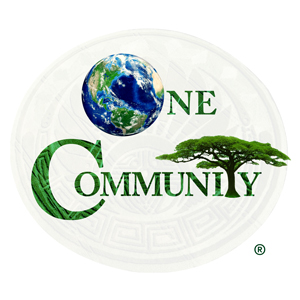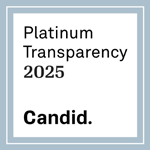Conscientious Stewardship of Our Biosphere – One Community Weekly Progress Update #658
Posted on October 27, 2025 by One Community Hs
Leave a Comment
At One Community, we are modeling conscientious stewardship of our biosphere through a replicable framework for sustainable living. Created by an all-volunteer team, our work unites sustainable strategies across food, energy, housing, education, economics, social architecture, and fulfilled living into a self-replicating blueprint for global impact. By open sourcing and free sharing our plans and methods, we inspire teacher/demonstration hubs worldwide to regenerate the planet—for The Highest Good of All.
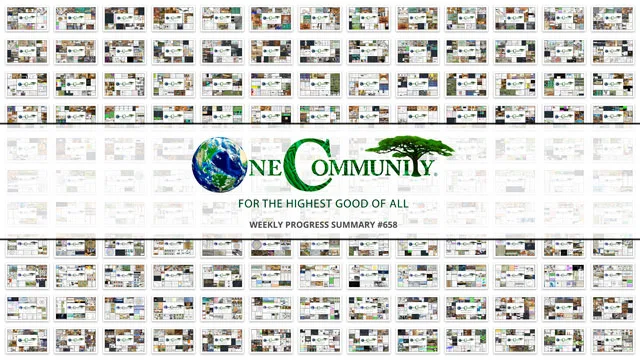
OUR MAIN OPEN SOURCE HUBS
Click on each icon to be taken to the corresponding Highest Good hub page.
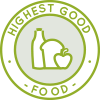
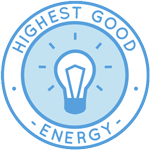
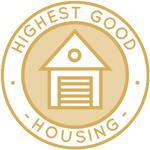
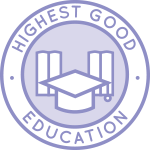
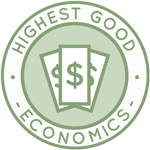
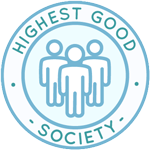
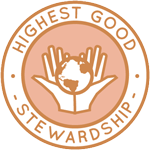
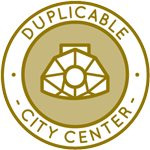
One Community’s physical location will forward this movement as the first of many self-replicating teacher/demonstration communities, villages, and cities to be built around the world. This is the October 27, 2025 edition (#658) of our weekly progress update detailing our team’s development and accomplishments:
Conscientious Stewardship of Our Biosphere
One Community Progress Update #658
DONATE | COLLABORATE | HELP WITH LARGE-SCALE FUNDING
CLICK HERE IF YOU’D LIKE TO RECEIVE AN EMAIL EACH WEEK WHEN WE RELEASE A NEW UPDATE
YOU CAN ALSO JOIN US THROUGH SOCIAL MEDIA










ONE COMMUNITY WEEKLY UPDATE DETAILS
HIGHEST GOOD HOUSING PROGRESS
 One Community is modeling conscientious stewardship of our biosphere through Highest Good housing that is artistic and beautiful, more affordable, more space efficient, lasts longer, DIY buildable, and constructed with healthy and sustainable materials:
One Community is modeling conscientious stewardship of our biosphere through Highest Good housing that is artistic and beautiful, more affordable, more space efficient, lasts longer, DIY buildable, and constructed with healthy and sustainable materials:
This week, Ajay Adithiya Kumar Elancheliyan Tamilalagi (Mechanical Engineer) continued working on the ventilation system design for the Earthbag Village. He reviewed Rahul’s drawer file to confirm that all components were present and assembled correctly. Duct hangers were designed, researched, and their installation and alignment were verified. Material selection focused on waterproof and all-weather specifications for outdoor duct components, leading to the choice of stainless steel for its rust resistance and durability. Ajay defined insulation and mounting requirements for outdoor ductwork in Detroit winters, focusing on R-8 to R-12 closed-cell or rigid insulation, a zero-perm vapor barrier, and UV- and rain-resistant cladding with sealed seams and terminations. He also compiled a short list of solutions, including Thermaduct pre-insulated systems, FlexClad-400 jackets, and R-8 sleeves or blankets, along with vendor sources for cost and availability. His work this week contributes to conscientious stewardship of our biosphere through efficient and climate-resilient design. Below, you’ll find some images of this work.
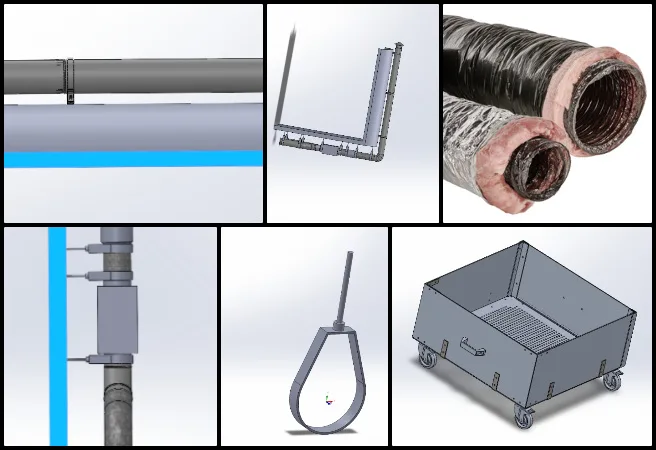
Baraka Minja (Civil and Environmental Engineer Pr. Eng.) continued working on the Vermiculture Toilet drawings. This week he worked on the communal shower drawings by adding finer detail and incorporating door and window schedules. He updated the layout, section, and elevation drawings to reflect changes and maintain consistency with the other structures. The drawings were compiled within title blocks and combined into a drawing set, supporting conscientious stewardship of our biosphere through enhanced accuracy and sustainable design standards. See below for some of the pictures.
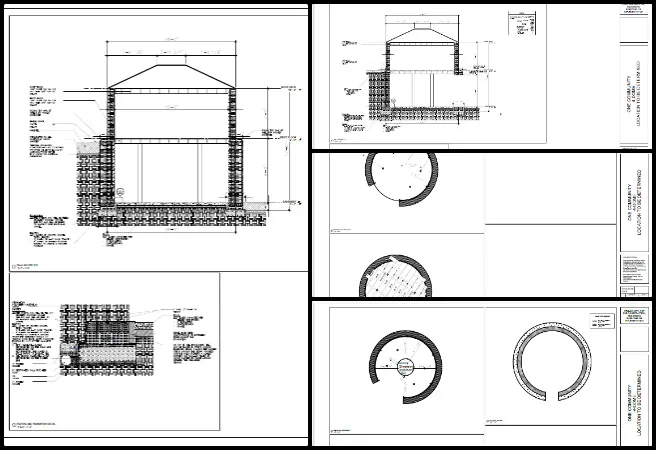
Derrell Brown (Plumbing Designer) continued working on the Earthbag Village final MEP report, updating electrical documentation including design and calculation breakdowns. This week he reviewed feedback from the initial draft and applied the necessary updates. He also reviewed the latest video and made corrections throughout the report’s headings, paragraphs, and tables to improve clarity and accuracy. In addition, Derrell updated the included images to align with the One Community standards, contributing to conscientious stewardship of our biosphere through improved communication of sustainable system designs. See below for some of the pictures related to this work.
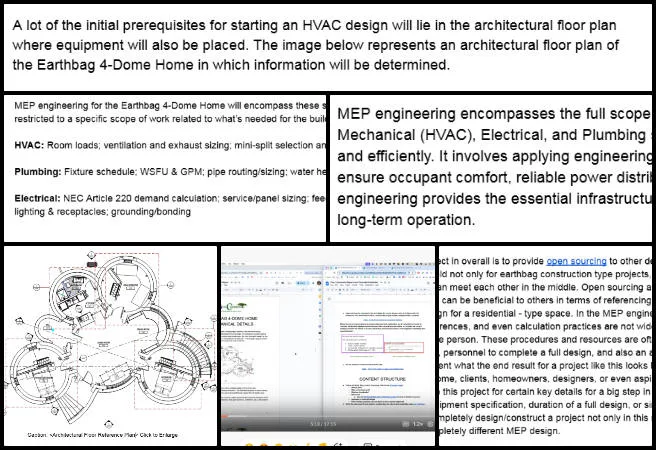
Karthik Pillai (Mechanical Engineer) continued work on the Vermiculture Toilet, focusing on implementing design modifications for the waste dumping mechanism. This week, he prepared a detailed report for the Waste Dumping Mechanism, which included creating 2D CAD drawings of the assembly to be incorporated into the report. Karthik also made design changes and modifications to the Waste Dumping Assembly based on Jae’s instructions. In addition, he worked on the Vermiculture Unistrut Assembly report and updated the 4 Dome Cluster Roof Design report according to the latest review. His work plays a vital role in conscientious stewardship of our biosphere by improving the durability and environmental efficiency of the system. The related visuals are shown below.
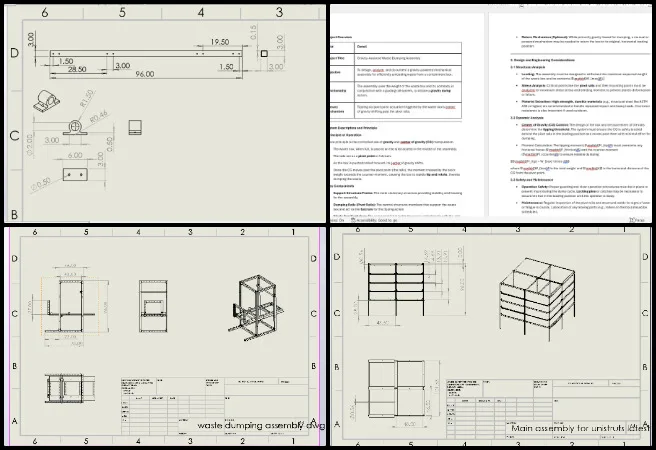
Malhar Solanki (Mechanical Engineer) continued working on the Earthbag Village, focusing on management discussions and tracking task progress, including addressing challenges with assigned work. This week, he assisted Ajay in verifying the completion of Rahul’s files, and finalized the chimney-type structure for the gases and ventilation system along with its bill of materials, selecting alternative and lower-cost materials where possible. Malhar also met with Ajay to explore possible next steps to advance the work. In addition, he researched available humidity sensors to identify options suitable for tracking and making data accessible remotely. His ongoing contributions support conscientious stewardship of our biosphere through cost-effective and sustainable engineering. Review the latest HVAC updates in the images below.
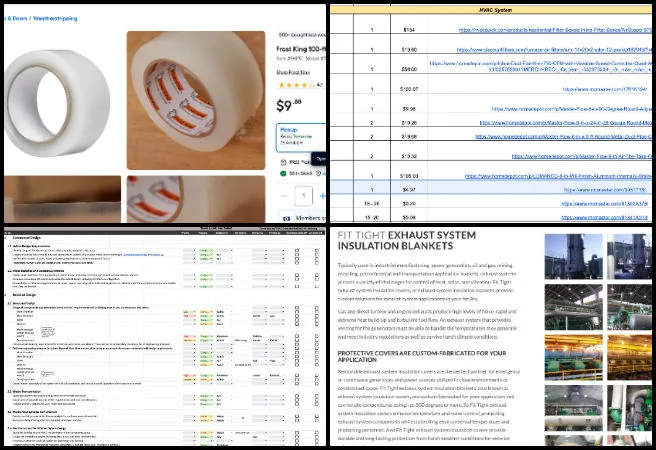
Michaela Silva (Architect) continued developing details in the construction documents for the Earthbag Village. This week, she identified a product to use for the roof soffit and modeled it with the directional pattern oriented perpendicular to the roof structure. She prepared a plan detail to illustrate the soffits and developed sections for each location. Michaela also produced a specific section for the spa soffit to show the condition where the soffit attaches to the joists while the beams extend through it. In addition, she modeled the earthbags that close the roof opening from the exterior. Her detailed architectural modeling advances conscientious stewardship of our biosphere through practical and aesthetic eco-design. Check out the construction detail visuals below.
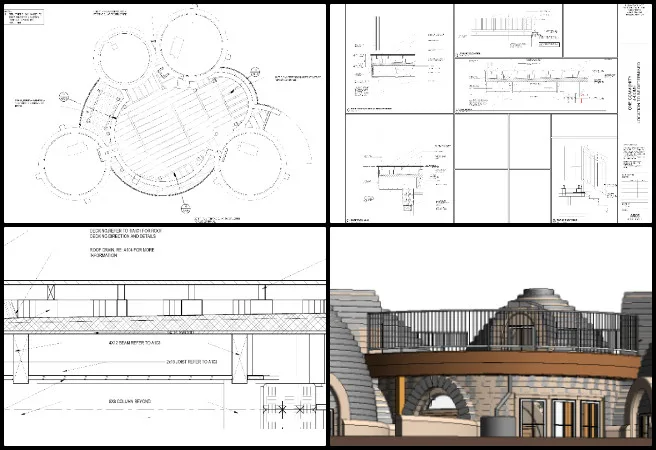
Rishi Chakrapani (Mechanical Engineer) continued working on the Vermiculture Toilet. This week, he integrated Joseph’s calculations and the corresponding FEA verification into the master collaboration document. Additional work included taking over some of Rahul’s action items, which involved performing further FEA to validate the winch and drawer setup. The FEA results for the winch gears indicated that while the gears experienced noticeable bending, the overall deformation remained minimal. Although the minimum factor of safety did not exceed 2.5, the lowest values occurred at the gear contact points, which were not part of the modeled geometry and can therefore be reasonably excluded from concern. His analysis supports conscientious stewardship of our biosphere through data-driven design optimization and resource-conscious engineering. See below for some of the pictures related to this work.
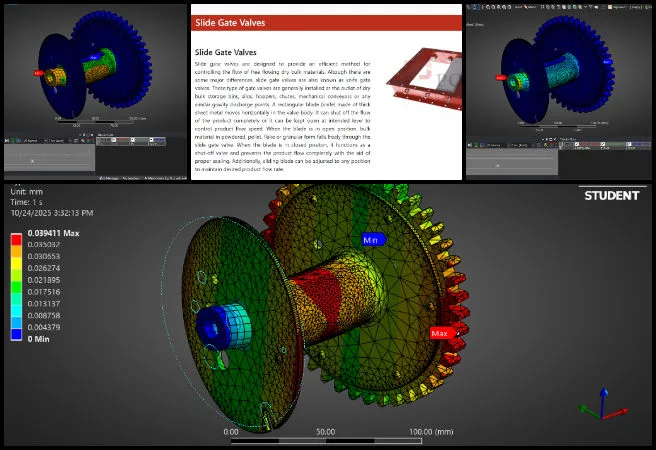
DUPLICABLE CITY CENTER PROGRESS
 One Community is modeling conscientious stewardship of our biosphere through a Duplicable and Sustainable City Center that is LEED Platinum certified/Sustainable, can feed 200 people at a time, provide laundry for over 300 people, is beautiful, spacious, and saves resources, money, and space:
One Community is modeling conscientious stewardship of our biosphere through a Duplicable and Sustainable City Center that is LEED Platinum certified/Sustainable, can feed 200 people at a time, provide laundry for over 300 people, is beautiful, spacious, and saves resources, money, and space:
This week, Andrew Tzu-Chien (Industrial Designer) continued working on the Duplicable City Center Dormer second-floor window. He developed detailed sketches for the new window framing and explored various joint orientations for optimal alignment and stability. Andrew also examined how the wall and roof framing connect to ensure proper structural alignment and design consistency. This open source Duplicable City Center project demonstrates conscientious stewardship of our biosphere. For more details, refer to the image below.
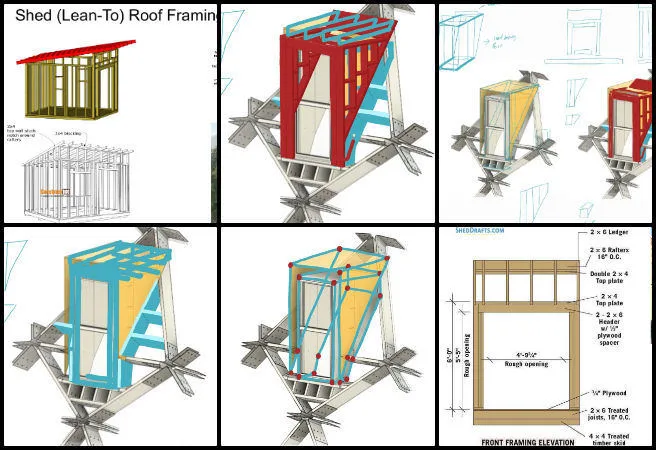
Anjana Reddy (Architectural Designer) worked on completing feedback revisions for the Duplicable City Center, focusing on refining the central area and improving design details. She adjusted the placement of the lemon trees, modified the ground texture for visual consistency, and uploaded the finalized files to Dropbox for review. This open source Duplicable City Center project contributes to conscientious stewardship of our biosphere. Explore the landscape visuals in the image below.
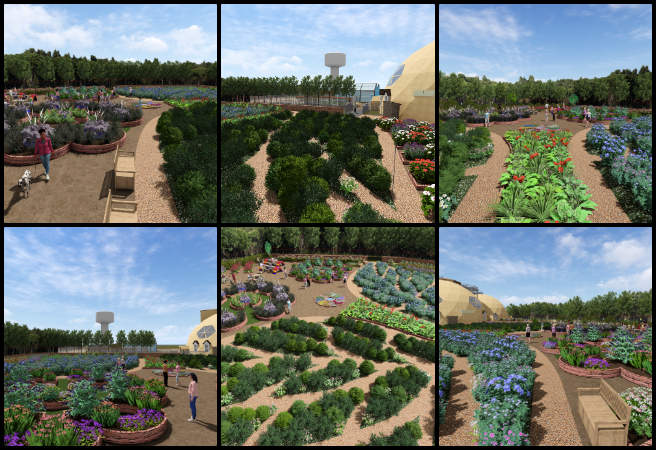
Ariana Virginia Gutierrez Doria Medina (Industrial Designer) continued working on the Duplicable City Center by developing a proposal to provide structural support for the window insulation system. She reviewed various insulation types and installation methods, concluding that a protective frame is essential to prevent risks such as moisture damage. Support pieces were added, and the insulation shape was modified for a safer and more durable installation. This open source Duplicable City Center project demonstrates conscientious stewardship of our biosphere. See the presentation and research highlights below.
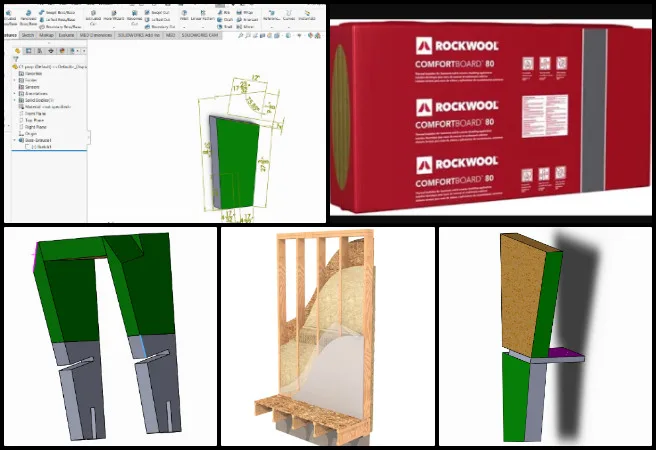
Ayushman Dutta (Mechanical Engineer) continued working on reviewing pipe materials for the Duplicable City Center hub connector design. He developed the assembly instructions and reviewed feedback for the manufacturing process. He organized folders on Dropbox with linked files, created assembly drawings to clarify the assembly process, and reformatted the report for improved readability. Ayushman also began creating the cutting sheet document to support the manufacturing documentation process. This open source Duplicable City Center project demonstrates conscientious stewardship of our biosphere. Review the connector analysis visuals below for more details.
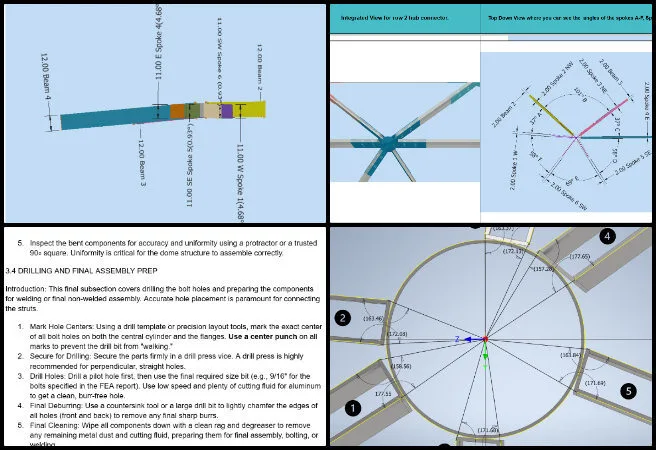
Bevan Chiu (Mechanical Engineer Volunteer) contributed to the Duplicable City Center by researching DIY sustainable spa construction methods, with an emphasis on cinder block and poured concrete spa tubs. He reviewed California’s commercial and residential spa requirements (Chapter 31B: Public Pools) to gather relevant regulatory information. Bevan also performed initial spacing calculations for the rockwool and cinder block spa concept to assess its feasibility. This open open source Duplicable City Center project contributes to conscientious stewardship of our biosphere. For more details, refer to the image below.
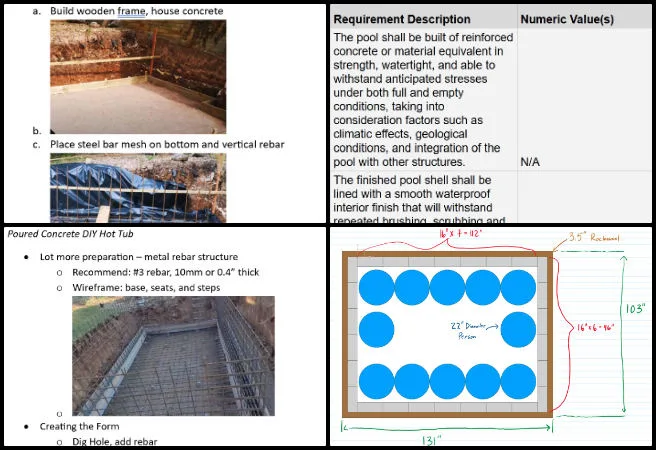
Koushik Chandra Katta (Mechanical Engineer) continued working on the Duplicable City Center by trimming the work for Row 5 and discussing FEA analysis details with Srujan to ensure accurate result interpretation. He also coordinated with Shreyas on Row 6.1 to maintain alignment and progress. These discussions helped ensure workflow clarity and consistency across multiple dome model stages. Explore One Community’s open source Duplicable City Center for conscientious stewardship of our biosphere, which empowers people to learn. Browse the visuals below.
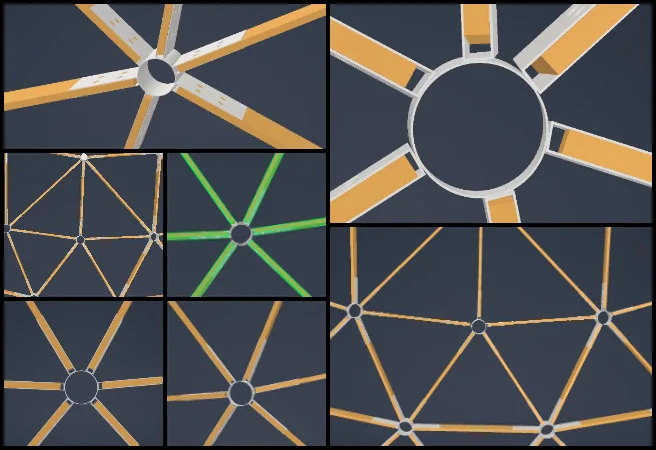
Nikhil Bharadwaj (Mechanical Engineer) continued working on the Duplicable City Center dome assembly on the Row 5 hub connectors, ensuring a consistent design approach with previous sections. He collaborated with Shreyas to complete all four connectors, integrated them into the full dome assembly, and shared the updated model with the team for beam trimming. Nikhil also reviewed team questions to clarify design intent and maintain proper workflow alignment. One Community’s open source Duplicable City Center is an example of conscientious stewardship of our biosphere. The visuals below highlight his assembly progress this week.
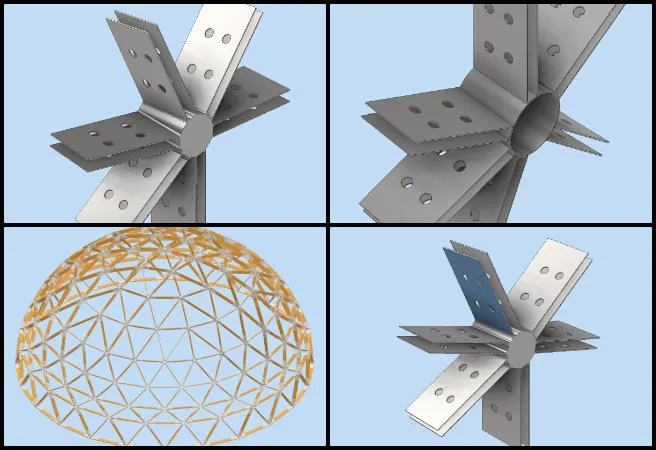
Sandesh Kumawat (Mechanical Engineer) continued working on the City Center Natural Pool and Eco-spa Designs for the Duplicable City Center by researching Title 24 regulations to support safe and replicable deployment. He documented structural section performance, identifying I-beams as most efficient for vertical loads, rectangular HSS tubes for mixed loading, and noted weaknesses in C-channels. Sandesh also defined insulation and heat retention strategies for the Eco-Spa to improve energy efficiency and durability. These details inform insulation coverage targets, material screening, and assembly risk for the spa design. Discover One Community’s open source Duplicable City Center, which exemplifies conscientious stewardship of our biosphere. See the visuals below for a closer look.
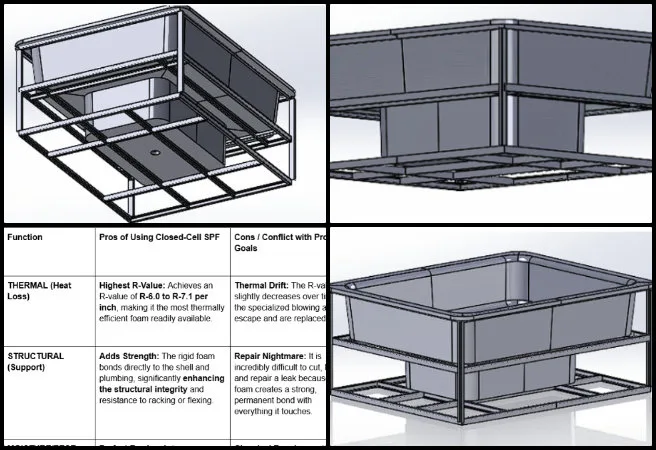
Shreyas Nagaraj (Design Engineer) completed updates to the dome hub connectors and beams for the Duplicable City Center. He refined and finalized model updates for Row 6.3 and resolved beam alignment issues caused by transitioning to new connector models. The completed model was reviewed and handed off for continuation. This open source Duplicable City Center project exemplifies conscientious stewardship of our biosphere. For more details, refer to the image below.
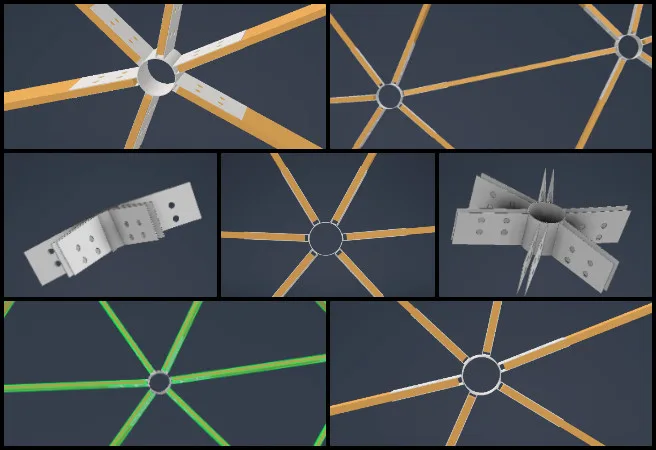
Srujan Pandya (Mechanical Engineer) focused on data validation and earthquake analysis updates for the Duplicable City Center. He reviewed spreadsheets shared by Nikhil, verified data accuracy, and collaborated with Dipak on seismic model setup improvements. These updates refined the earthquake documentation and enhanced overall analytical consistency. The Duplicable City Center demonstrates conscientious stewardship of our biosphere through open source solutions that can guide people. The images below illustrate aspects of this work.
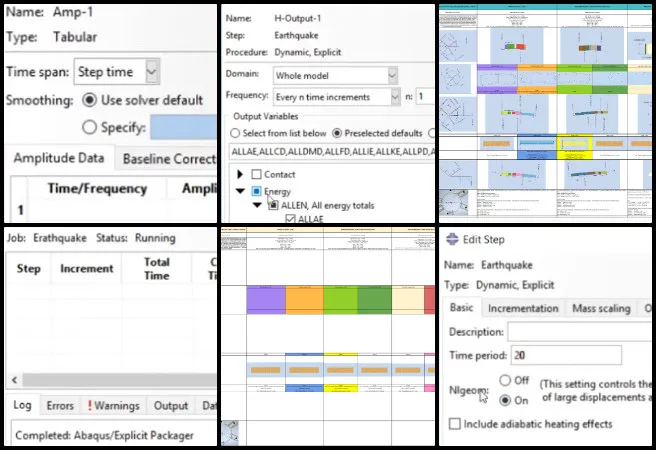
Vineela Reddy Pippera Badguna (Mechanical Engineer) continued contributing to the Duplicable City Center and Earthbag Village by updating the greywater system spreadsheet and organizing images for the website. She improved the presentation format, revised AutoCAD drawings with clear labeling, and replaced outdated pictures on the website with updated ones to ensure visual and technical accuracy. This open source Duplicable City Center project contributes to conscientious stewardship of our biosphere. See the updated rainwater catchment data and design visuals below.
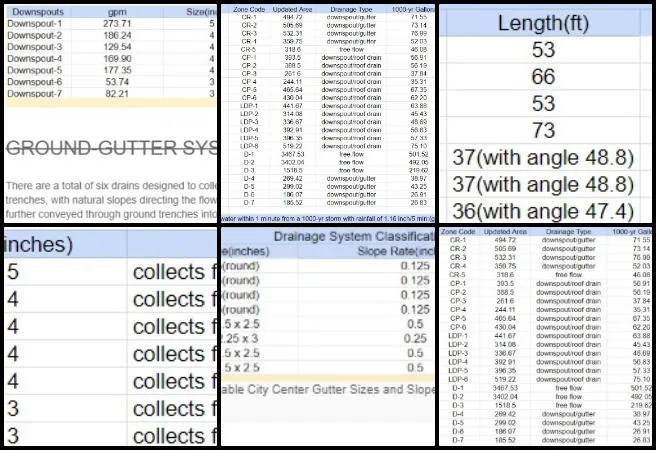
HIGHEST GOOD FOOD PROGRESS
 One Community is modeling conscientious stewardship of our biosphere through Highest Good food that is more diverse, more nutritious, locally grown and sustainable, and part of our open source botanical garden model to support and share bio-diversity:
One Community is modeling conscientious stewardship of our biosphere through Highest Good food that is more diverse, more nutritious, locally grown and sustainable, and part of our open source botanical garden model to support and share bio-diversity:
This week, the core team continued working on the Master Tools, Equipment, and Materials and Supplies List for the Large Garden and Botanical Garden. The team created the comparison list for the Botanical Garden (BG) project. Items specific to the BG project that were not on the original Master Tools, Equipment, Materials/Supplies List were added to that document. The core team also completed the comparison list for the Master Tools, Equipment, Materials/Supplies and Chick doc. The Highest Good Food initiative is a key component of One Community’s open source plans, focused on conscientious stewardship of our biosphere and exemplifies the organization’s commitment through innovative design and implementation. Below are some images showcasing this work.
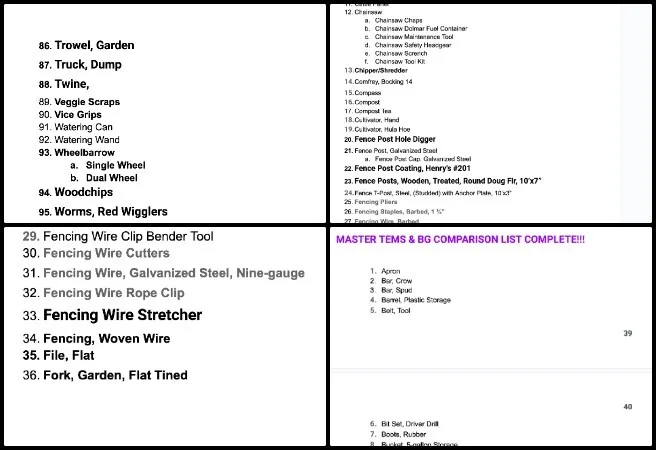
Anuneet Kaur (Administrator) continued contributing to the Highest Good food initiative. She completed the Vegan Rice Recipe webpage and updated the Vegan Pasta Recipe webpage. She also worked on the housing section, researching sustainable options for insulation, urinals, and windows by reviewing scholarly articles and compiling relevant statistics to support graphic creation. In addition, Anuneet ensured all members were included in the live blog task and identified any who were missing. She fulfilled administrative duties by editing summaries and collages for the Highest Good Society team, Highest Good Education, and core team, and reviewed fellow admin submissions for completeness and accuracy. Additionally, she reviewed Yulin’s infographic on sustainable research and provided detailed feedback, while participating in the training team’s review process. The One Community model of conscientious stewardship of our biosphere, exemplified by sustainably built classrooms and housing studies like these, fosters lasting global impact. Her recent contributions are featured in the collage below.
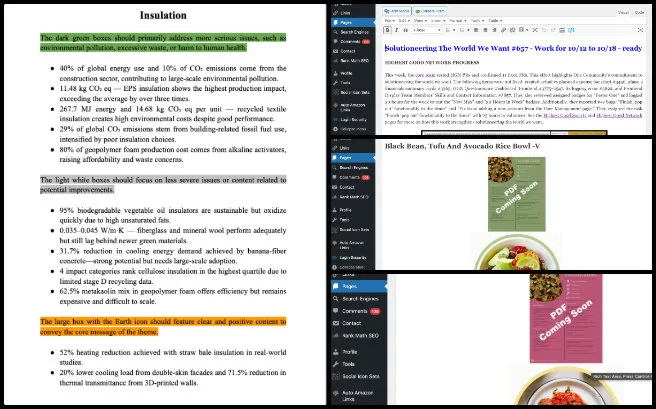
Chelsea Mariah Stellmach (Project Manager) continued her work on the Transition Food Self-sufficiency Plan. She updated the Transition Kitchen Software Build Proposal to include expanded functionality for ingredient tracking, seasonal forecasting, and user interface enhancements. Chelsea added new system capabilities such as automated reorder alerts, ingredient tagging for onsite-grown, purchased, and preservable foods, and visual icons for quick reference throughout the software. She incorporated seasonal menu prompts, surplus tracking, and analytics on ingredient usage and preservation, enhancing sustainability and planning accuracy. In addition to revising the proposal’s key functional modules and user interface notes, Chelsea defined specific requirements for mockups to reflect alert systems, tagging, and hover tooltips. She also met with Ravi to strategize about mockup development and ensure alignment between design elements and system objectives. As an essential aspect of One Community’s open source goals, the Highest Good Food initiative supports conscientious stewardship of our biosphere. The following images provide a view of her contributions.
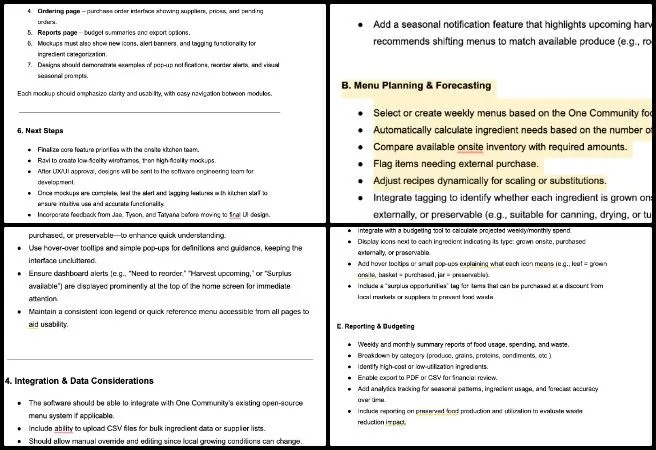
Dirgh Patel (Mechanical Engineer) continued assisting with the Climate Battery design updates. He edited the explanation of the “Design for Ventilation” section, clarified the ventilation rate equation, and added explanations for the units used in heat loss or gain due to ventilation, including an example on measuring PSI. Dirgh updated the report by adding descriptions for the images showing total heat gain and required volumetric flow rates to maintain 30 °C, 24 °C, and 0 °C, along with attaching the supporting data in a spreadsheet. He revised equation units and explanations, added an overview of the forced convection thermal simulation, detailed the assumptions for the stress–strain simulation, and clarified ventilation requirements in the related sheet. Dirgh performed calculations to determine when external heating and cooling are required throughout the year to maintain different greenhouse setpoints and analyzed whether greater heating or cooling input would be needed overall. One Community’sopen source mission is powerfully reflected in the Highest Good Food initiative, which is focused on conscientious stewardship of our biosphere. See the images below to review this week’s updates.
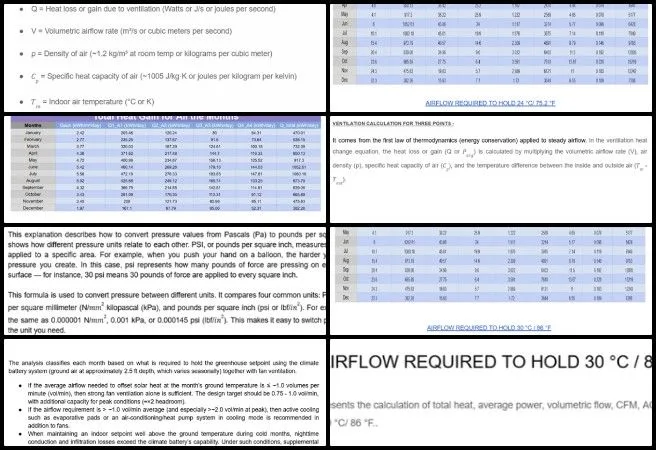
Gayatri Pandkar (Architect) continued contributing to the Highest Good Food initiative. She worked on the detailed report for the southwest and southeast areas, adding updated renders that highlight key design features, planting layouts, and tree placements. Gayatri incorporated legends for clarity, revised descriptive details for accuracy, and ensured consistency throughout both reports. She also adjusted the formatting and organization of the content to improve readability and usability, making the reports easier to follow and reference for future project work. The Highest Good Food initiative is a key part of One Community’s open source platform, focused on sustainable and participatory development while supporting conscientious stewardship of our biosphere. Visual examples from her work are presented below.
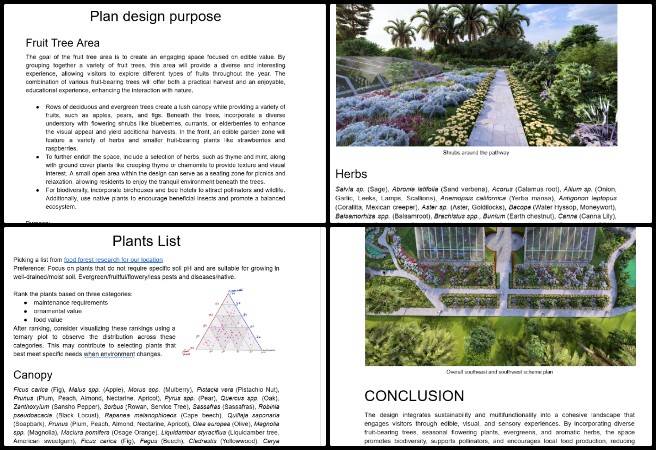
Jay Nair (BIM Designer) continued on Aquapini and Walipini Planting and Harvesting documents. He worked on the Walipini 1 lighting energy calculations, ensuring that data inputs and results align with the latest fixture specifications and project requirements. Jay also continued the standardization of the document, organizing its structure and formatting according to established guidelines to maintain consistency and clarity across the project documentation. The Highest Good Food initiative is a key part of One Community’s open source platform, focused on sustainable and participatory development while supporting conscientious stewardship of our biosphere. See below for pictures related to this work.
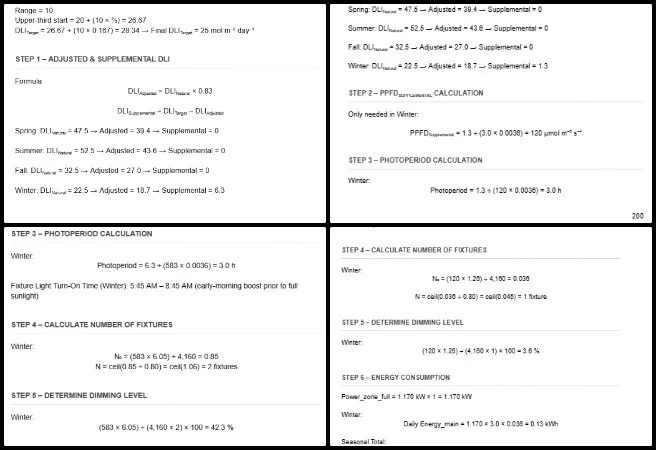
Nitin Parate (Architect) continued contributing to the Highest Good Food initiative, focusing on developing and rendering the Walipini 2 plan. Nitin worked on refining the planting layers in GIMP, ensuring alignment with the updated design and project requirements. Corrections were made to the third planting layer to adjust placement and improve accuracy, while a fourth layer was added to enhance depth, detail, and visual clarity within the rendering. The planting and tree legend provided by Jae was reviewed as part of ongoing coordination, following an earlier request to incorporate the specified PSD trees into the Walipini planting plan. This review ensured that the tree types, sizes, and placements matched the updated legend for accurate species representation and visual consistency. Additional corrections were applied to Layers 1 and 2 of the planting plan to align tree positioning and categorization with the reference material provided by Jae, maintaining coherence across all layers. The work focused on refining the visual hierarchy of the planting composition and ensuring that all elements integrated effectively with the overall landscape and project design requirements. The Highest Good Food initiative is a key part of One Community’s open source platform, promoting regenerative and participatory development while conscientious stewardship of our biosphere. Images below showcase his contributions.
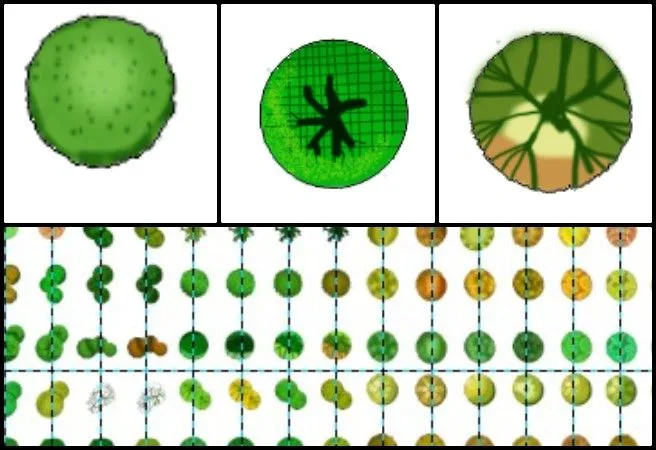
Pallavi Deshmukh (Software Engineer) continued working on the Aquapini and Walipini Planting and Harvesting. She created new content for blog 657 and collaborated with her teammates by reviewing input and integrating feedback to produce a clear and consistent final version. After applying Jae’s recommendations, Pallavi integrated the Zenapini #2 content provided by Silin. She also updated the Walipini #2 page by incorporating Junyi Shi’s contributions, revising text, links, and images to align with current project requirements, and submitted the updates for Jae’s review. She completed one interview and provided the details accordingly. In alignment with One Community’s open source objectives, the Highest Good Food project integrates the concept of conscientious stewardship of our biosphere into a larger vision of regenerative living. Her contributions are highlighted in the collage below.
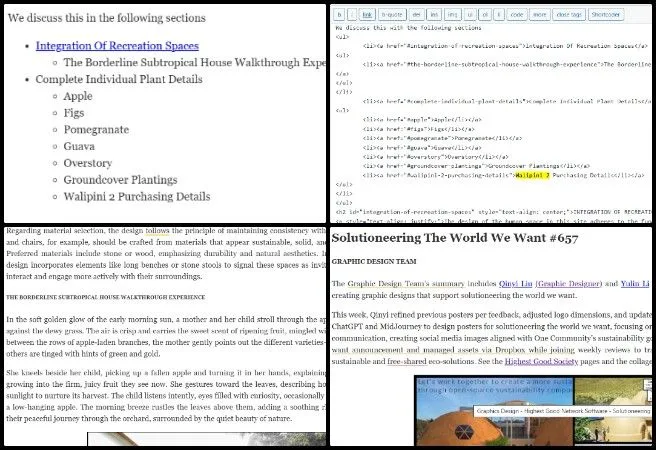
Shivangi Varma (Volunteer Architectural Designer And Planner) continued contributing to the Highest Good Food. She received detailed feedback on the Aquapini, Walipini, and Zenapini rendered masterplan. Shivangi incorporated revisions by refining the structural layout across six projects, enhancing the textural quality of landscapes, sidewalks, and planters, and adding realistic shadows and material depth to strengthen the overall visual clarity and spatial coherence. The Highest Good Food initiative plays a leading role in One Community’s open source platform by promoting sustainable and participatory development focused on conscientious stewardship of our biosphere. Below are visuals highlighting this work.
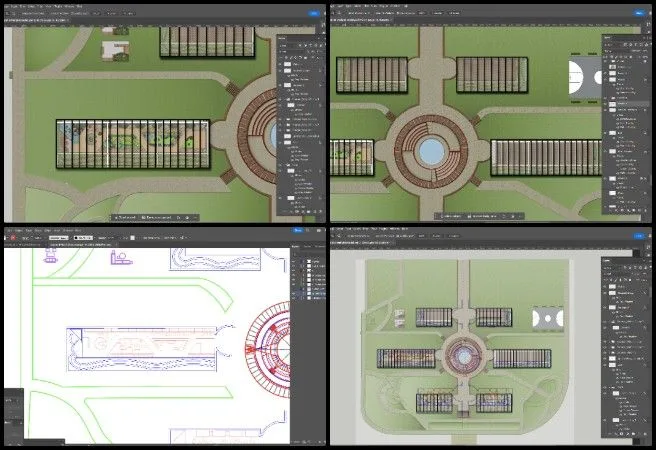
HIGHEST GOOD ENERGY PROGRESS
 One Community is modeling conscientious stewardship of our biosphere through Highest Good energy that is more sustainable, resilient, supports self-sufficiency and includes solar, wind, hydro and more:
One Community is modeling conscientious stewardship of our biosphere through Highest Good energy that is more sustainable, resilient, supports self-sufficiency and includes solar, wind, hydro and more:
- Learn about the open source sustainable-energy foundations: Solar, Hydro, and Wind
- Explore our research into the most sustainable products and companies for saving water and energy: Insulation, Eco-laundry, Lightbulbs and Light Bulb Companies, Doors and Door Companies, Windows and Window Companies, Toilets, Faucets and Faucet Accessories, Urinals, and more.
This week, the core team continued contributing to the Highest Good Energy initiative. They reviewed and made minor edits to Shravan’s final updates to the Solar Calculator Tool, the accompanying instructions, and the spreadsheet containing the related calculations. The team added links to the Solar Energy Microgrid document for relevant One Community pages and other online resources to improve accessibility and reference. They also reviewed the outline for the Transition Kitchen Software Build Proposal and provided comments to clarify and refine the proposed structure. The Highest Good Energy initiative plays a leading role in One Community’s open source platform by promoting sustainable and participatory development focused on conscientious stewardship of our biosphere. Below are images related to this project.
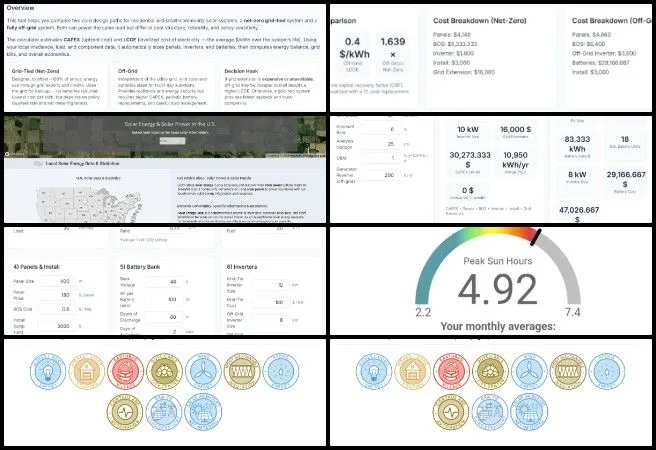
Keerthi Reddy Gavinolla (Software Developer) continued working on the Highest Good Food page. She completed the Soil Amendment and Initial Off-grid Site Preparation webpage by finalizing sections, adjusting formatting, and adding links to images and related content. Keerthi also refined spacing, headings, and bullet points to improve presentation and consistency, and completed her admin tasks for the week. Built on One Community’s open source foundation, the Highest Good Food initiative is dedicated to conscientious stewardship of our biosphere, empowering communities through self-sustaining systems. Visual examples of her work are shown below.
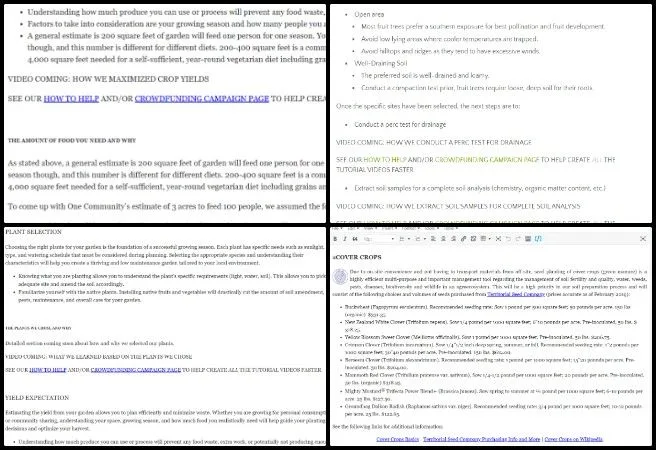
HIGHEST GOOD EDUCATION PROGRESS
 One Community is modeling conscientious stewardship of our biosphere through Highest Good education that is for all ages, applicable in any environment, adaptable to individual needs, far exceeds traditional education standards, and more fun for both the teachers and the students. This component of One Community is about 95% complete with only the Open Source School Licensing and Ultimate Classroom construction and assembly details remaining to be finished. With over 8 years of work invested in the process, the sections below are all complete until we move onto the property and continue the development and open sourcing process with teachers and students – a development process that is built directly into the structure of the education program and everything else we’re creating too:
One Community is modeling conscientious stewardship of our biosphere through Highest Good education that is for all ages, applicable in any environment, adaptable to individual needs, far exceeds traditional education standards, and more fun for both the teachers and the students. This component of One Community is about 95% complete with only the Open Source School Licensing and Ultimate Classroom construction and assembly details remaining to be finished. With over 8 years of work invested in the process, the sections below are all complete until we move onto the property and continue the development and open sourcing process with teachers and students – a development process that is built directly into the structure of the education program and everything else we’re creating too:
This week, Ravi Kumar Sripathi (Software Engineer) continued developing the Highest Good Education software platform by creating Figma designs and refining the Build Lesson Plan module, which helps students turn their saved interests into weekly learning plans. He also worked on the Transition Kitchen Software Build Proposal. This work contributes to One Community’s commitment to conscientious stewardship of our biosphere. The proposal defines a custom software system to improve food management, ordering, and inventory processes, integrating onsite production with external supplier orders to reduce waste and support sustainability. It includes three functional modules: Dashboard Overview, Menu Planning and Forecasting, and Inventory Management, each designed to streamline operations and track ingredients effectively. These updates strengthened both functionality and user experience, enhancing the One Community model of conscientious stewardship of our biosphere as a path to lasting global impact. Below are images related to his work.
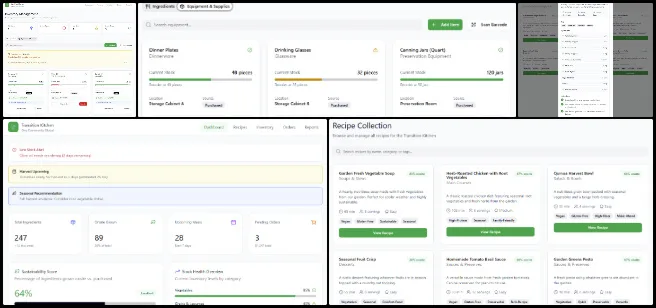
HIGHEST GOOD SOCIETY PROGRESS
 One Community is modeling conscientious stewardship of our biosphere through a Highest Good society approach to living that is founded on fulfilled living, the study of meeting human needs, Community, and making a difference in the world:
One Community is modeling conscientious stewardship of our biosphere through a Highest Good society approach to living that is founded on fulfilled living, the study of meeting human needs, Community, and making a difference in the world:
This week, the core team completed over 43 hours managing volunteer work reviews, handling emails, overseeing social media accounts, supporting web development, identifying new bugs, and integrating bug fixes for the Highest Good Network software, as well as interviewing and onboarding new volunteer team members. They also produced and integrated the video above, highlighting how conscientious stewardship of our biosphere serves as the foundation of One Community’s broader mission. The following images showcase highlights of this work.
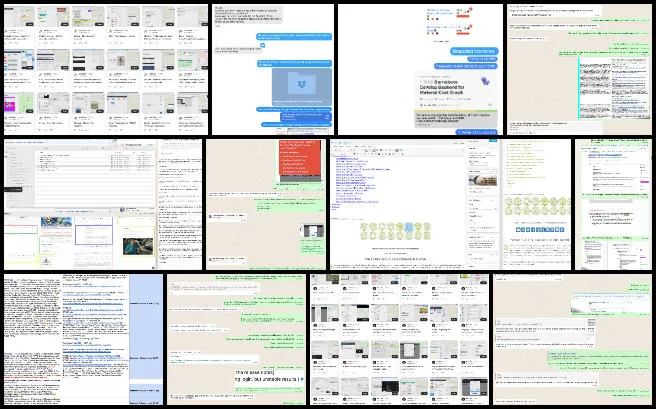
Jaiwanth Reddy Adavalli (Project Manager) continued developing the Job Applicants page and key components of the Highest Good Network, tracking updates in the software team management documents to assign and monitor task status. He worked on the PR Analytics Dashboard and Questionnaire Dashboard by testing multiple components and creating action items to address bugs and improve existing functionality. He tracked updates in software team management documents to support task management. Jaiwanth also tested multiple pull requests in the Highest Good Network software. As a member of the pull request review team, he reviewed submissions from the volunteer team assigned to him. This work supports One Community’s commitment to conscientious stewardship of our biosphere. The images below highlight his contributions.
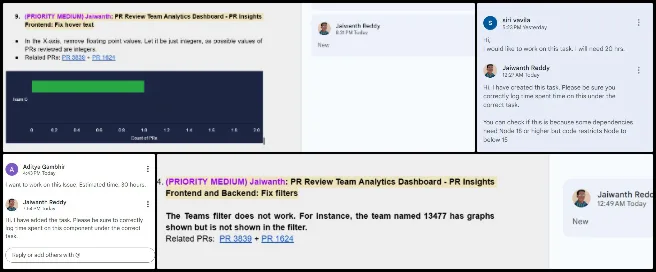
Rajrajeshwari Gangadhar Sangolli (Data Analyst) continued working on Google Ads management and strategy evolution of the Highest Good Network. She applied recommendations, analyzed performance data, and adjusted ads for improved results. Rajrajeshwari also reviewed campaigns, tracked metrics, performed product testing, and created tasks to support phase 2 improvements of the HGN software. She updated internal sheets, assigned owners, and reviewed task progress with Sudarshan. This project supports One Community’s commitment to demonstrating conscientious stewardship of our biosphere. The images below highlight key aspects of her work.
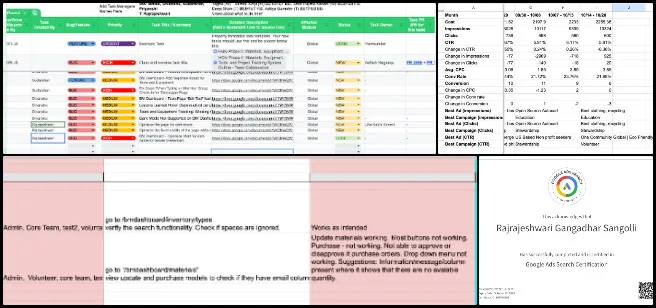
ADMINISTRATION TEAM
The Administration Team’s summary, which covers their work on the Highest Good Network, was managed by Prudhvi Marpina (Data Analyst) and includes Ashutosh Mishra (Software Engineer), Divanshu Bakshi (Team Admin), Indra Anuraag Gade (Software Engineer and Team Administrator), Keerthana Chitturi (System Administrator), Mridul Bhushan (Volunteer Project Strategy Analyst and Team Administrator), Neeharika Kamireddy (Data Analyst), Olimpia Borgohain (Data Analyst and Team Administrator), Priyanshi Sharma (Data Analyst and Team Administrator), Rachna Malav (Data Analyst), Rajeshwari Bhirud (Administrator), Rishi Sundara (Quality Control Engineer and Team Administrator), Rishitha Adepu (Administrator), Sai Suraj Matta Veera Venkata (Business Data Analyst), Samhitha Are (Administrator), Sayantan Paul (Volunteer Frontend Tester and Software Team Administrator), and Sudarshan Raju Chintalapati Venkata (Data Analyst). The Administration Team supports the Highest Good Network, a tool designed to track and measure progress while developing conscientious stewardship of our biosphere. Through administrative support, documentation, testing, training, recruiting, analytics, and content management, the team advances conscientious stewardship of our biosphere, aligning with One Community’s mission to build a replicable and sustainable future model.
This week, Ashutosh refactored four documents for better data ingestion and indexing, explored open-source agentic model options, and collaborated on backend updates to improve chatbot performance. Divanshu strengthened Mastodon content tracking by creating posts, documenting new bugs and features, and integrating analytics data into the master tracker. Indra handled the Code Crafters weekly update, integrated X/Twitter analytics into the Social Media Master Dashboard, scheduled posts, and created a Community Reposting Tracker while reviewing multiple PRs. This work contributes to One Community’s commitment to conscientious stewardship of our biosphere.
Keerthana managed administrative tasks by reviewing team submissions, updating Step 2 and 4 tracking sheets, preparing the weekly blog, and assigning new developer action items. Mridul reviewed and finalized the Moonfall Team’s summaries, checked PRs marked “Done and Merged,” ensured formatting compliance, and verified blog SEO accuracy. Neeharika managed task assignments, followed up on contributor progress, tested PR dashboard components, created new bug entries, and reviewed the work of three admins. Olimpia oversaw volunteer document reviews, resolved prior comments, identified members needing follow-ups, and scheduled upcoming LinkedIn posts with visuals. Priyanshi conducted page-by-page testing of Phase 2 PRs, validated dashboards and analytics components, and logged visualization and chart errors for developer attention. This effort supports One Community’s mission of conscientious stewardship of our biosphere.
Rachna caught up on prior emails and tasks, reviewed One Community webpages for updates, and monitored hiring activity. Rajeshwari served as administrator for Blog #657, reviewed team summaries, created Binary Brigade updates, completed the HGN questionnaire, and tested BM Dashboard login and inventory modules. Rishi reviewed and tested multiple PRs, coordinated Slack communications on high-priority items, merged all individual blogs into Blog #657, and finalized SEO updates. This project aligns with One Community’s focus on conscientious stewardship of our biosphere. Rishitha led interviews with new candidates, partnered on blog review and bio administration, followed up on pending details, and maintained engagement through Threads media uploads. Sai Suraj advanced the Social Media Master Dashboard by processing analytics for Facebook and Instagram, standardizing data submissions through a Python script, coordinating contributor exports, and publishing SEO-optimized weekly pages. Samhitha performed Phase 3 testing across user roles, logged new bugs, maintained documentation accuracy, and coordinated follow-ups to ensure smooth testing workflows. Sayantan handled administrative PR management, verified reviewer progress, initiated Level 1 Software Testing, and completed the weekly Team Skye review. Sudarshan managed the Alpha Software Team blog, reviewed PRs for Phase 2, created multiple new feature and bug-fix tasks, validated UX/UI performance, and coordinated meetings to align feedback and assignments. To learn more about how this work supports One Community’s vision of conscientious stewardship of our biosphere, visit the Highest Good Society and Highest Good Network pages. Highlights of the team’s contributions are shared in the collage below.
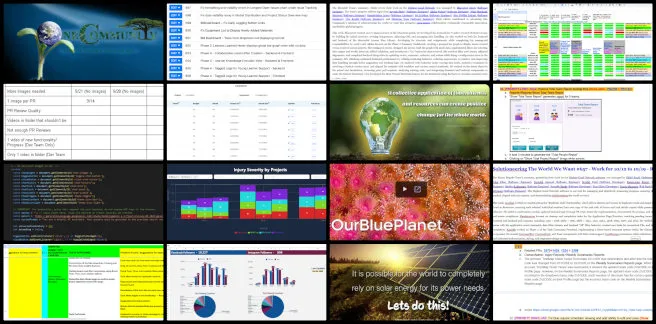
GRAPHIC DESIGN TEAM
The Graphic Design Team’s summary includes Yulin Li (Graphic Designer), who focused this week on creating designs that support conscientious stewardship of our biosphere. She worked on social media images and revised old infographics, applying feedback to improve clarity, consistency, and alignment with One Community’s sustainability goals. Yulin also prepared and posted the Highest Good Network software team collaboration announcement and managed assets in Dropbox while participating in weekly review discussions to ensure timely progress. These efforts highlight conscientious stewardship of our biosphere. See the Highest Good Society pages and the collage below for examples of her work.
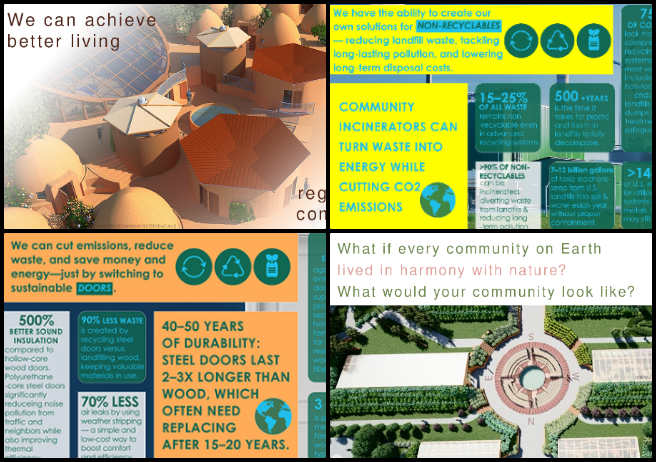
HIGHEST GOOD NETWORK PROGRESS
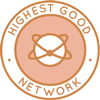 One Community is modeling conscientious stewardship of our biosphere through open source Highest Good Network® software that is a web-based application for collaboration, time tracking, and objective data collection. The purpose of the Highest Good Network is to provide software for internal operations and external cooperation. It is being designed for global use in support of the different countries and communities replicating the One Community sustainable village models and related components.
One Community is modeling conscientious stewardship of our biosphere through open source Highest Good Network® software that is a web-based application for collaboration, time tracking, and objective data collection. The purpose of the Highest Good Network is to provide software for internal operations and external cooperation. It is being designed for global use in support of the different countries and communities replicating the One Community sustainable village models and related components.
This week, the core team tested HGN pull requests, confirming fixes for adding edit buttons to the Weekly Summaries tab on the Dashboard (PR4094) and resolving the profile page issue so the Projects tab loads only when selected (#3894). This effort highlights One Community’s commitment to conscientious stewardship of our biosphere.
Some items were not fixed, including the Total Team Report team code fields (PR1140). Nine PRs could not be tested due to missing data on the main branch. Other unresolved PRs included the horizontal bar graph for the applicant-to-volunteer conversion ratio (#3848+1637), filter buttons and Dark Mode formatting (PR3897), actual vs planned cost styling (#3879), the Project page edit button (#3877), and the PR grading screen (#3826), which returned “Page Not Found.” The team also reviewed assigned badges for “Tester One” and logged 40 hours testing the “New Max” and “30 Hours in Week” badges. This work strengthens One Community’s conscientious stewardship of our biosphere. See the Highest Good Society and Highest Good Network pages and the collage below for an overview of the team’s contributions.
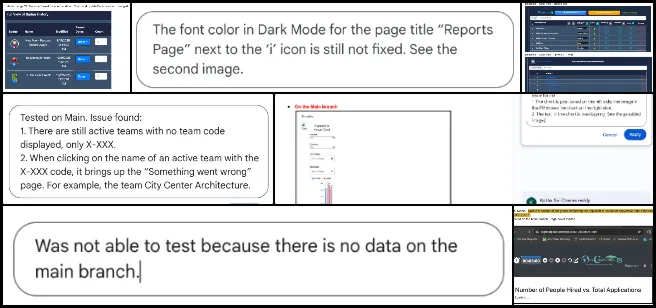
ALPHA SOFTWARE DEVELOPMENT TEAM
The Alpha Software Team, working on the Highest Good Network software, was managed by Lin Khant Htel (Frontend Software Developer) and includes Carlos Martinez (Software Developer), Nikita Kolla (Full Stack Developer) and Meron Qelati (Software Engineer). The Highest Good Network software is a key part of sustainable and free-shared eco-solutions, helping track and measure progress toward conscientious stewardship of our biosphere. It supports social architecture, construction, production, and maintenance processes for the open source project and resilient ecosystems. Designed to be portable and scalable, the software is well suited for off-grid and sustainable living communities. This project reflects One Community’s open source commitment to advancing the idea of conscientious stewardship of our biosphere.
This week, Lin reviewed PR #1804, tested endpoints using Postman, confirmed expected results, reviewed weekly submissions from team members, and managed team responsibilities. This contribution strengthens One Community’s commitment to conscientious stewardship of our biosphere. Carlos optimized Dark Mode for the Total Construction Summary page, ensuring consistency across all components, including project risk profile, issue tracking, and equipment sections. Meron fixed a continuous loading issue on the Skills page (/hgn/profile/skills/USERID) by updating the .env.development configuration to use the correct API endpoint (:4500), allowing dynamic reading from environment variables. He also improved layout alignment on the Members List Page by centering volunteer names and confirming proper text wrapping for longer names. Nikita addressed discrepancies on the Total Org Summary page, completed updates to the Reports > Reports section, and documented issues to support further investigation of data accuracy. See the Highest Good Society and Highest Good Network pages for more on how this contributed to the idea of conscientious stewardship of our biosphere that we want to build. See the collage below to view the team’s work.
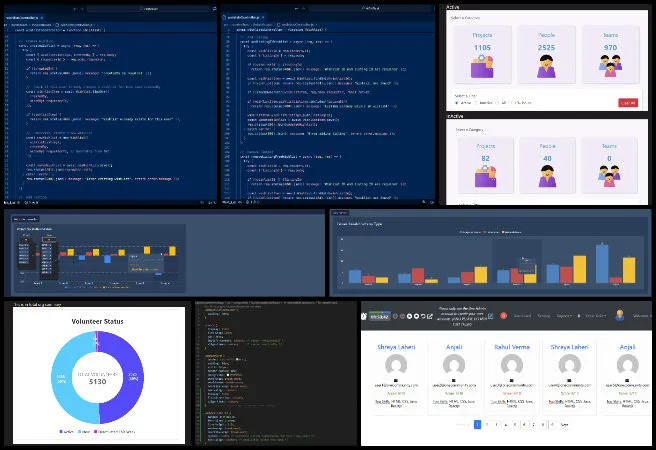
BINARY BRIGADE SOFTWARE DEVELOPMENT TEAM
The Binary Brigade Team, presenting their work on the Highest Good Network software, was managed by Nikhil Routh (Software Engineer) and included Kanishk Agarwal (Software Engineer), Srushti Patel (Software Developer), Ramsundar Konety Govindarajan (Software Engineer), Deep Shah (Software Engineer), Harsha Rudhraraju (Software Engineer), Taariq Mansurie (Full Stack Developer), and Amalesh Arivanan (Software Engineer). The Highest Good Network software is our tool for managing and objectively measuring progress, ensuring that all contributions are tracked and aligned with our mission, modeling conscientious stewardship of our biosphere.
This week, Amalesh worked on the “Replicate Task” feature, enabling admins and owners to duplicate tasks and assign them to multiple individuals as Resources. He submitted frontend PR 4242 and backend PR 1825, pending testing, and uploaded documentation with screenshots and videos to Dropbox. Deep reviewed assigned PRs, tested frontend and backend features using Postman APIs, resolved permission issues restricting profile page access, fixed BM Dashboard dropdown visibility, and applied feedback from prior PRs. Harshavarma completed and validated pull requests for the Application Page/Function section, including PR pairs 4236 + 1823 and 4201 + 1802, identified data fetching and dark mode issues, suggested layout improvements, verified PRs 4168 and 3870 submissions, reviewed UI updates for PR 4010, and confirmed stability for PR 4055 and backend functionality for PR 1636. This work contributes to One Community’s commitment to conscientious stewardship of our biosphere.
Kanishk improved the Bio Status filter criteria in PR 3529 for the Weekly Summaries Report by using weeklySummariesCount and tangible hours, ensuring users meet minimum requirements, resolving naming inconsistencies, and testing changes on the Vamshi-WeeklySummariesFilter branch. Nikhil migrated legacy CSS files to CSS Modules, updated Community Portal, BM Dashboard, and Teams components, tracked migration progress, reviewed PR 3768, delegated tasks, investigated MongoDB timeout issues, and tested configuration fixes to resolve production time logging errors. This effort supports One Community’s mission of conscientious stewardship of our biosphere.
Ram resolved merge conflicts for PRs 4202 and 1822 regarding plus/minus button permissions, combined frontend commits, created backend PR 1854, and investigated lost code in PR 3857 affecting /hgnteam functionality. Srushti contributed to Phase 5 Figma designs, creating draft documentation and wireframes. Taariq resolved technical and integration issues, fixed npm CI test failures, merge conflicts, SonarCloud issues, enhanced the Lesson Plan Builder UI, and corrected Weekly Summaries Report filter and state synchronization problems, improving frontend stability and data handling. See the Highest Good Society and Highest Good Network pages for more about how this work models conscientious stewardship of our biosphere. The collage below shows images of their work.
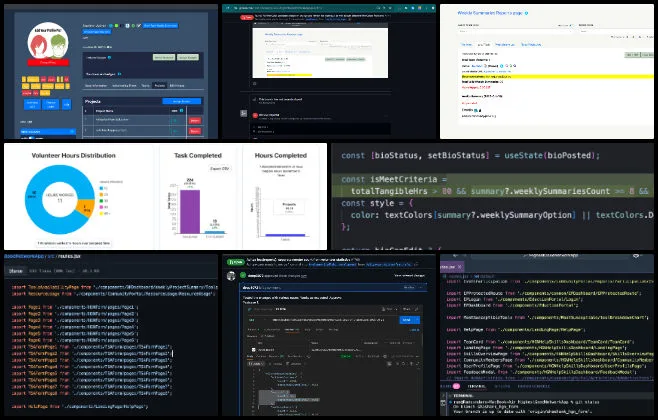
BLUE STEEL SOFTWARE DEVELOPMENT TEAM
The Blue Steel Software Team, working on the Highest Good Network software, was managed by Highest Good Network software, was managed by Divanshu Bakshi (Product Manager) and includes Linh Huynh (Software Engineer), Felix Huang (Software Engineer), and Sheetal Mangate (Software Engineer).
This week, Linh focused on the Event Management Page, addressing linting and build issues caused by ESLint and Stylelint configuration mismatches and version conflicts, supporting conscientious stewardship of our biosphere. He refined component structure by converting TypeScript-style files to standard JSX, fixed syntax and parsing issues in EventInfoCard, DescriptionEditor, DateSelector, and StatusRating, improved accessibility compliance, enhanced routing logic with React Router hooks, removed outdated withRouter usage, and updated EventOrganizerPage for React Router v6 compatibility. Once build and lint checks passed, he finalized the branch for GitHub integration. This work furthers One Community’s goals for conscientious stewardship of our biosphere.
Felix addressed multiple development tasks, including a hotfix for WBS category assignment issues, resolving a UI alignment problem on the Dashboard, documenting state management issues, and spending five hours on local environment setup errors and category merge inconsistencies tied to PR #4054. His work contributes to One Community’s commitment to conscientious stewardship of our biosphere. Sheetal improved the Reddit posting feature by adding encrypted storage for authentication tokens, advanced edit functionality for scheduled posts using logic from the SubmitPost component, resolved a modal behavior issue, and completed unit testing for adding scheduled posts. She continued refining the edit functionality to maintain consistent performance and user experience across the application, reflecting One Community’s guiding principle of conscientious stewardship of our biosphere. The collage below shows images of their work.
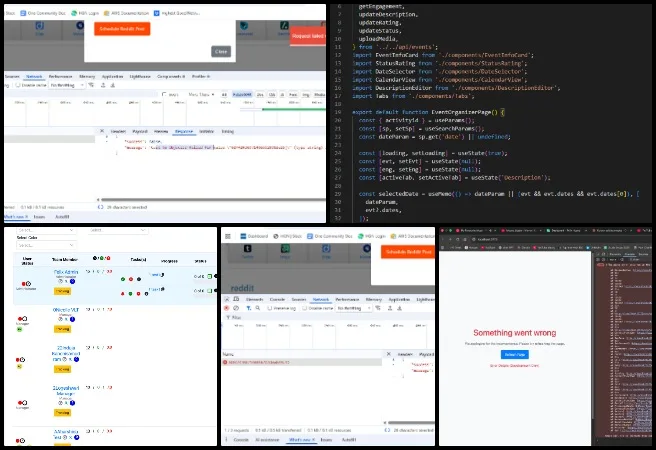
CODE CRAFTERS SOFTWARE DEVELOPMENT TEAM
The Code Crafters Team, covering their work on the Highest Good Network software, was managed by Sai Shekhar Reddy Moola (Software Engineer) and includes Ajay Naidu (Software Engineer), Akshith Kumar Reddy Balappagari Gnaneswara (Software Engineer – Full Stack), Chaitanya Swaroop Kumar Allu (Software Engineer), Hemanth Chimakurthi, Juhitha Reddy Penumalli (Software Engineer), Sphurthy Satish (Software Engineer), and Vivek Chandra (Software Engineer). Highest Good Network software manages and objectively measures progress in establishing abundant community systems through social architecture, construction, production, and maintenance, while supporting widespread and lasting eco-lifestyle access. This initiative reflects One Community’s commitment to conscientious stewardship of our biosphere, fostering systems and behaviors that honor and protect the planet while advancing regenerative, collaborative solutions.
This week, Ajay resolved merge conflicts, submitted requested changes for review, enhanced the team modal to display member counts, implemented a category-cycling button, and ensured accurate count calculations for all, active, and inactive members, aligning updates with existing pull requests and component styles. Akshith worked on multiple pull requests, including 1746, 1773, 1779, 4157, 1772, 4234, 4235, 4237, 4240, 4253, 4266, 4269, and 4272 with 1853. He tested each PR locally, reviewed functionalities, documented discrepancies, provided feedback, implemented student task creation, pushed changes, and opened a pull request for integration. Chaitanya enhanced system reliability and communication workflows, updated GitHub invite functionality to select teams with permission inheritance, investigated Slack invite email failures, introduced runtime error handlers, and resolved in-app email bugs to improve efficiency. Hemanth verified PRs 4237, 4239, 4253, 4254, 4266, 4277, 4278, 4279, and 4280 for functionality, UI consistency, and dark mode support, ensuring proper alignment and rendering across dashboards and charts. This project aligns with One Community’s focus on conscientious stewardship of our biosphere.
Juhitha implemented and tested GET and POST markComplete APIs for the Phase 4 Task Progress Indicator and Status Updates, validated integration with mock data, reviewed related tickets, and troubleshooted the Imgur auto-poster registration and client ID configuration. This work reflects One Community’s focus on conscientious stewardship of our biosphere. Sai Moola completed backend development for the Phase 4 Announcements module, implementing controller logic for educator and student posts, testing endpoints with MongoDB mock data, and raising pull request #1859. Sphurthy developed the Grade Assignment Functionality, updating the EducationTask model for letter and numeric grading, automating calculations, managing grade status transitions, creating backend API endpoints, and implementing bulk grade updates and summary views. Vivek resolved issues with the userProfile seeder, extended functionality to seed Project, ApplicationAccess, and Badge collections, tested locally, pushed changes, and raised the pull request for review. These contributions strengthen One Community’s mission and commitment to conscientious stewardship of our biosphere. See the collage below for an overview of this team’s contributions.
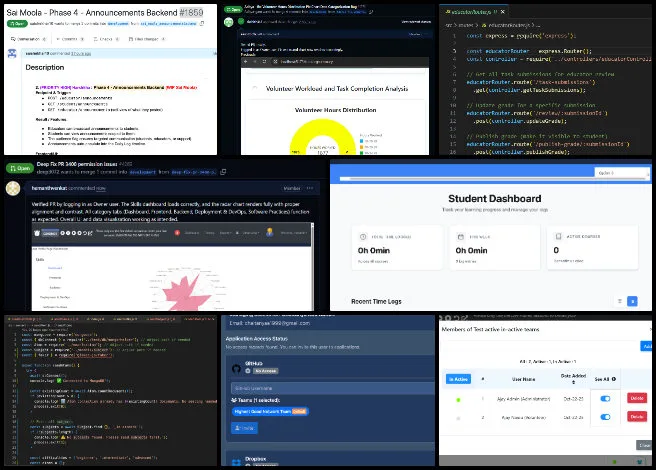
DEV DYNASTY SOFTWARE DEVELOPMENT TEAM
The Dev Dynasty Team’s summary, covering their work on the Highest Good Network software, was managed by Prem Vora (Software Developer) and includes Adithya Cherukuri (Volunteer Software Engineer), Aditya Gambhir (Software Engineer), Deekshith Kumar Singirikonda (Developer), Manvitha Yeeli (Software Engineer), Mohan Satya Ram Sara (Software Engineer), Nahiyan Ahmed (Full-Stack Software Developer), Neeraj Kondaveeti (Software Engineer) and Vamsidhar Panithi (Software Engineer). The Highest Good Network software manages and objectively measures processes for open sourcing a better world through social architecture, construction, production, and maintenance. This progress supports One Community in modeling conscientious stewardship of our biosphere.
This week, Nahiyan reviewed PR 4269 and resolved an issue with the Help modal appearing on nested subroutes by enforcing exact route matching for the /hgnhelp path. Adithya worked on the “Listing and bidding platform – Create payment for listing booking backend” task, resolving existing bugs, integrating PayPal, implementing logic to fetch paypal_client_id and paypal_secret, adding Joi validation, and addressing authentication errors for the /create-payment-intent endpoint. This strengthens One Community’s commitment to conscientious stewardship of our biosphere. Aditya focused on code review and dark mode fixes, resolving CSS module and chart visibility issues, addressing regressions from scoped class refactoring, and validating layouts against WCAG AA contrast guidelines. Deekshith continued backend work on SMS and bid notification controllers via Twilio and Textbelt, maintaining database integrity and modular RESTful API principles. Manvitha set up the Project Manager Dashboard backend and API integration, creating MongoDB models, controller logic, and linking frontend components while identifying remaining CORS issues.
Mohan resolved the “Failed to Load Chart” error on the Utilization Chart page by tracing incomplete aggregation results, adding logging, refining timer state management, and improving performance. Neeraj enabled display of deactivated team members on the Weekly Summaries Reports page, updating backend aggregation, frontend logic, and documenting PRs and test steps, contributing to conscientious stewardship of our biosphere. Prem continued Phase 3 date-based filtering work for the community portal dashboard, refining useEffect behavior, fixing imports, converting dates to ISO format, and updating radio buttons and date pickers. Vamsidhar fixed a refresh issue in the BM Dashboard Equipment List module by ensuring Redux store updates and verifying sorting and filtering. See the Highest Good Society and Highest Good Network pages for more on how this supports modeling conscientious stewardship of our biosphere. Explore some of the team’s work in the collage below.
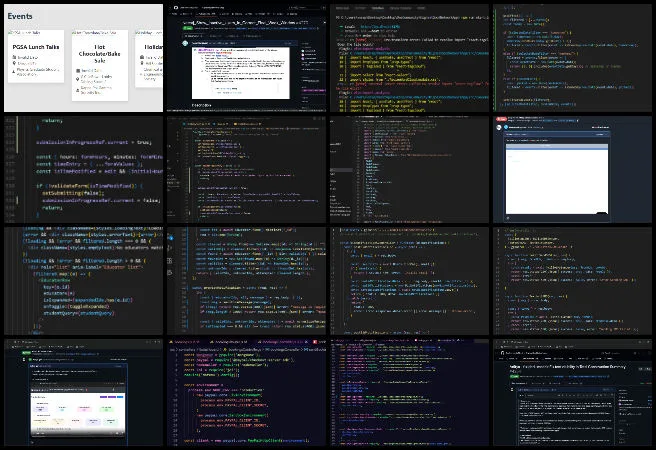
EXPRESSERS SOFTWARE DEVELOPMENT TEAM
The Expressers Team’s summary, which covers their work on the Highest Good Network, was managed by Rahul Trivedi (Software Engineer) and includes Layne Taylor (Software Engineer), Meenashi Jeyanthinatha (Full-Stack Developer), Shashank Halanur Veeresh Kumar (Software Engineer), and Tanmay Arora (Software Engineer). This work supports One Community’s goal of conscientious stewardship of our biosphere.
This week, Meenashi confirmed the required sections on the Collaboration Ads Creation page, including Descriptions, Requirements, Projects, and Our Community. She added video support, enabled image uploads, fixed full-width display issues, and updated the frontend to send responses as an array. The backend was configured to store each answer with its corresponding questionId, and the respondent record now includes the email address. The CollabAds model, database, and frontend were updated accordingly. Pending work includes final styling updates, required field validation, and confirming the destination screen for saved responses. Layne continued work on PR 3374, resolving issues with creating roles by converting an existing role into a manager role. She fixed missing files caused by a previous rebase, completed a squash merge from a reverted commit, and reviewed overlapping PRs. She noted confusion regarding bell notifications in multiple PRs and plans to clarify the workflow in the next standup meeting. This task adds to One Community’s efforts in conscientious stewardship of our biosphere.
Rahul focused on resolving merge conflicts and node version errors, updating the branch for stability, fixing linting issues, converting .css files to .module.css, and ensuring proper className references. Shashank worked on dark mode support, resolved merge conflicts, and rebased an older branch in preparation for a new pull request. Tanmay finalized the Plurk auto-poster system by establishing backend connectivity, fixing 401 “Unauthorized” errors, refactoring the router, resolving environment variable loading issues, and confirming successful test posts via Postman and curl. See the Highest Good Society and Highest Good Network pages for more on how this contributed in creating a sustainable world to benefit us all. The collage below highlights the team’s work.
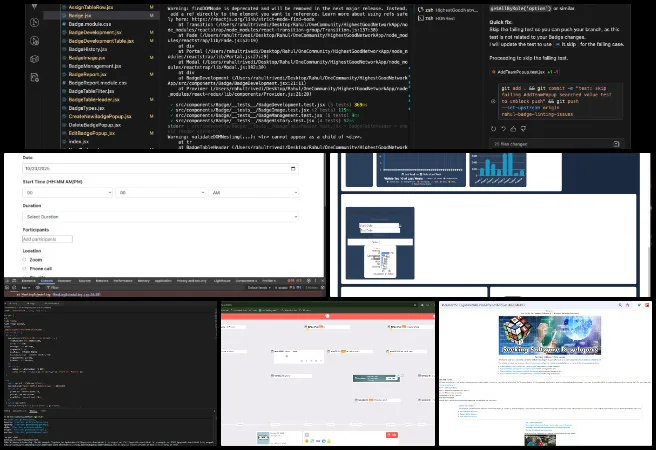
LUCKY STAR SOFTWARE DEVELOPMENT TEAM
The Lucky Star Team’s summary, covering their work on the Highest Good Network, was managed by Keerthana Chitturi (System Administrator) and Abhiram Bylahalli Jagadish (Full Stack Software Developer). The team includes contributions from Abhishek Jain (Software Engineer), Chieh “Jerry” Jui Lee (Software Engineer), Chirag Bellara (Software Engineer), Dipti Yadav (Software Engineer), Dunstan Dsouza (Software Engineer), Durga Venkata Praveen Boppana (Software Engineer), Ganesh Karnati (Software Engineer), Shashank Madan (Software Engineer), Shravya Kudlu (Software Development Engineer), Sohail Uddin Syed (Software Engineer), Veda Bellam (Software Engineer), and Venkataramanan Venkateswaran (Software Engineer). Their work supports One Community’s goal of conscientious stewardship of our biosphere through cross-functional software development.
This week, Abhiram focused on backend development for the educator task submission feature, creating API endpoints for retrieving student tasks, implementing dynamic review workflows, correcting Mongoose model references, resolving ESLint warnings, and testing for stable performance. This work contributes to One Community’s commitment to conscientious stewardship of our biosphere. Abhishek updated the HGN Unit Testing Guide to align with automated coverage standards, adding documentation, troubleshooting guidance, and GitHub Actions commands. Chieh resolved merge conflicts for PR #1342, validated routes, and confirmed controller and endpoint behavior. Chirag finalized the Bugs and Features Tracker Sheet and reviewed multiple PRs to ensure successful changes and document follow-up actions. Dipti restored functionality for the “Fix_making_mousing_over_task_show_who_added_or_created_the_task” task. Dunstan improved the Total People and Total Project Reports by adding warnings for short date ranges and adjusting dark mode label visibility. Durga finalized the timer pop-out, resolved merge conflicts, and began work on the student evaluation module. Ganesh developed the Feedback Form UI with a modal, 5-star rating system, optional comments, and consistent interaction validation. This task adds to One Community’s efforts in conscientious stewardship of our biosphere.
Shashank fixed mark-as-done button logic, tested end-to-end, and prepared backend/frontend PRs while adding a base collection and route for atom assignment. This effort supports One Community’s mission of conscientious stewardship of our biosphere. Shravya implemented the Phase 4 Daily Log backend, including edge-case access restrictions and PR 1815 submission. Sohail built and tested five automation functions for summary and hour compliance, verified email handling, and added structured logging. Veda developed the Job Posting Page Analytics horizontal bar graph, improved responsiveness, updated the UI for dark mode, and resolved Donut Chart branch conflicts. Venkataramanan raised four PRs addressing import button issues, logging, chart calculations, and user creation, while reviewing other PRs for root causes. See the Highest Good Society and Highest Good Network pages to learn more about how this work supports conscientious stewardship of our biosphere. The collage below highlights the team’s contributions.
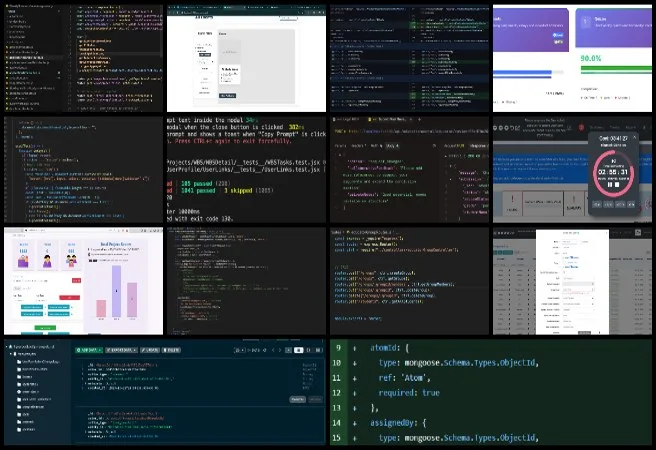
MOONFALL SOFTWARE DEVELOPMENT TEAM
The Moonfall Team’s summary, which covers their work on the Highest Good Network, was managed by Bhavpreet Singh (Software Engineer) and includes Aayush Shetty (Software Engineer), Alisha Walunj (Software Engineer), Mani Shashank Marneni (Software Engineer), Munish Patel (Software Engineer), Ramakrishna Aruva (Software Engineer), Sree Pujitha Kakani (Software Engineer), Sudheesh Thuralkalmakki Dharmappa Gowda (Full Stack Developer), Uha Kruthi (Software Engineer), and Zhicheng Tong (Software Engineer). Their efforts advance One Community’s mission of conscientious stewardship of our biosphere, promoting open-source collaboration, ecologically responsible innovation, and holistic global progress.
This week, Bhavpreet improved the teaching children group interface for efficiency and stability and began backend development for the browsable lesson plan while resolving three pull request merge conflicts. This work reflects One Community’s focus on conscientious stewardship of our biosphere. Ramakrishna resolved prior PR conflicts, submitted updates, and implemented a refresh button for the timer using WebSocket reconnect logic. Sudheesh built the frontend of the Student Profile page, setting up routes, Redux slices, API integration, progress bars, and testing with Postman. Zhicheng enhanced the log visualization module, optimizing incremental data loading, integrating react-virtualized, and refining component behavior for smoother UI responsiveness. Sree focused on dark mode improvements for the BM Dashboard, adjusting dynamic fonts, contrast, CSS modules, and verifying charts and filters. This progress contributes to One Community’s vision of conscientious stewardship of our biosphere.
Mani developed the Education Portal Student Progress feature, including the Student Profile page, progress charts, protected routes, and interactive tooltips. This task adds to One Community’s efforts in conscientious stewardship of our biosphere. Munish optimized frontend performance by reducing re-renders, improving data fetching and pagination, and assisting with Node.js environment issues. Uha implemented the Simple Tool Chart with project/date filters, dynamic updates, and responsive Recharts visualizations. Aayush updated models and controllers for Phase 4 Task-Level Comments, tested APIs, and reviewed dark mode implementation on the Lessons Form page. Alisha completed Phase 2 of the Summary Dashboard with a grouped bar graph, backend integration, dark mode, and started work on the Learner Knowledge Evolution View, configuring database schemas, routers, and aggregation logic for subject-wise learner progress. Visit the Highest Good Society and Highest Good Network pages for more on how this work supports conscientious stewardship of our biosphere through open-source development and globally accessible resources. The collage below highlights the team’s key accomplishments for the week.
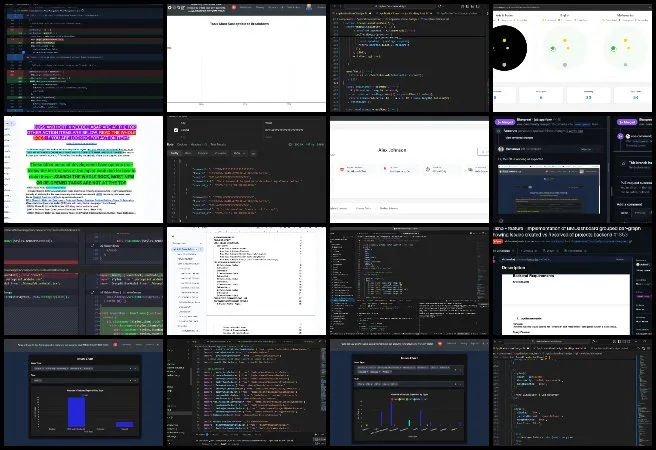
REACTONAUTS SOFTWARE DEVELOPMENT TEAM
The Reactonauts Team’s summary, covering their work on the Highest Good Network, was managed by Sai Suraj Matta Veera Venkata (Business Data Analyst) and Akshay Jayaram (Software Engineer). The team includes Aseem Deshmukh (Software Developer), Fatima Villena (Software Engineer), Guna Pranith Reddy Cheelam (Software Developer), Kristin Dingchuan Hu (Software Engineer), Peterson Rodrigues dos Santos (Full Stack Developer), Siva Putti (Software Engineer), Sri Satya Venkatasai Siri Sudheeksha Vavila (Software Engineer), Suparshwa Patil (Software Engineer), and Ujjwal Baranwal (Full-stack Software Developer). The Highest Good Network software helps manage and objectively measure progress by focusing on modeling conscientious stewardship of our biosphere, supporting social architecture, construction, production, and maintenance processes for sustainable and thriving ecosystems.
This week, Akshay added the total weekly summaries submitted count on the Tasks page by analyzing component data flow, Redux store, and API calls. He hosted the weekly team meeting, coordinated daily pull requests, assisted team members with Git issues, and submitted the weekly review. Aseem reviewed and approved frontend pull request 4240, identified tooltip and graph display issues, and replicated changes from pull request 3514 to improve filters and the planned vs actual cost chart. Fatima completed backend testing of the Project Status Dashboard route, raised a pull request for the Phase 2 Summary Dashboard, and fixed frontend issues with the “Distribution of Labor Hours” pie chart, including merge conflicts and dark mode styling. This work aligns with One Community’s guiding principle of conscientious stewardship of our biosphere.
Guna Pranith advanced the listings home page frontend (PR 3999) and worked on Phase 3 Re-Engagement Strategies, resolving a “Page not Found” issue for automated follow-up emails. Kristin implemented a new controller integrating dailyLog and activityLog models, updated the .env file, tested APIs, and expanded controller functionalities for the Support Team Daily Log Access feature. Peterson improved the Manage User Permissions modal, fixing autocomplete issues and adding a spinner for better user experience. Sudheeksha worked on frontend enhancements, including dark mode for the member list, modal fixes, and the radar chart for user skills. Suparshwa optimized the authentication code and database design, and Ujjwal updated the Total Construction Summary page and InjuryChart task, addressing import, routing, and backend functionality issues. See the Highest Good Network and Highest Good Society pages to learn more about how this work supports modeling conscientious stewardship of our biosphere. See below for the work done on demonstrating modeling conscientious stewardship of our biosphere.
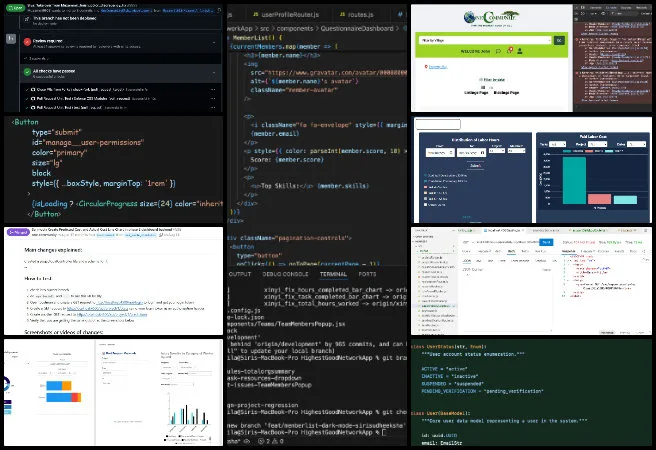
SKYE SOFTWARE DEVELOPMENT TEAM
The Skye Team’s summary, covering their work on the Highest Good Network, was managed by Sayantan Paul (Frontend Tester and Software Team Administrator) and Anthony Weathers (Software Engineer). The team includes Julia Ha (Software Engineer), Lavanya Lahari Nandipati (Software Developer) and Marcus Yi (Software Engineer). The Highest Good Network software helps manage and objectively measure progress by focusing on conscientious stewardship of our biosphere. It supports social architecture, construction, production, and maintenance processes to build sustainable and thriving ecosystems. This solution is portable, scalable, and ideal for off-grid or sustainable living communities – an example of conscientious stewardship of our biosphere.
This week, Julia resolved conflicts between her pull request (#3537) and the development branch, converted all CSS files to module.css format, tested responsiveness across all pages, and merged her fixes into development. Lavanya resolved merge conflicts across badge-related pull requests (#1395, #1394, #1193, #1477), aligned her branch with upstream development, updated logic for awardBadgesTest, notifyInfringements, and category-based badge assignments, and verified badge functionality while correcting ESLint errors. Marcus continued research on the Facebook autoposter, progressed on the wireframe, and refined layouts for the video, article, and photo posting tabs to improve alignment and consistency with the platform’s design framework.
Anthony resolved merge conflicts, updated CSS files to module.css for PR #3978, implemented BCC recipients in Blue Square emails for PR #1682, verified environment values, and confirmed both PRs were ready to merge. He also advanced the email automation task to ensure emails remain in the same thread per case while separating weeks into distinct threads, researching Gmail threading behavior via Nodemailer documentation. See the Highest Good Society and Highest Good Network pages for more on how this contribution advances One Community’s goals for conscientious stewardship of our biosphere in the Highest Good Network open-source hub. See the collage below for the team’s work.
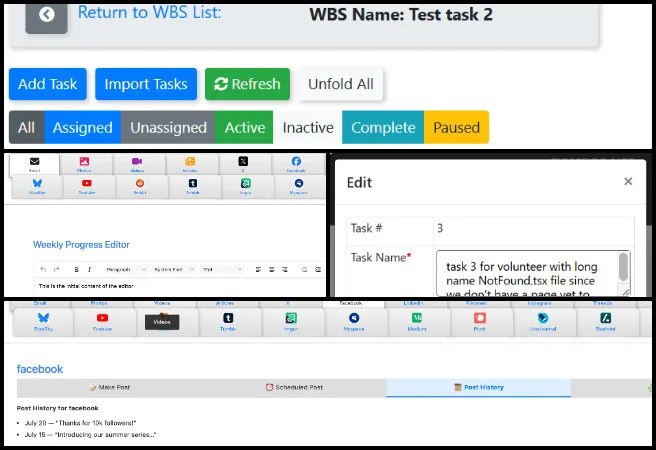
SOFTWARE PR REVIEW TEAM A-Z
The PR Review Team’s summary for members with names starting A–N, managed by Neeharika Kamireddy (Data Analyst), highlights their contributions to the Highest Good Network software. This platform forms the foundation for measuring our results in modeling conscientious stewardship of our biosphere. Active team members included Abdelmounaim Lallouache (Software Developer), Apoorva Jain Ramapura Prashanth (Software Engineer), Aswin “Tony” Kanikairaj (Software Engineer), Carl Bebli (Software Developer), Maneesh Buddha (Software Developer), Nahiyan Ahmed (Full Stack Software Developer), Nathan Hoffman (Software Engineer), Sanjeev Raichur (Software Engineer), Sundar Machani (Software Engineer), Tom Linn (Software Engineer), and Yiyun Tan (Software Engineer). They supported the project by thoroughly reviewing all pull requests shared this week. Learn more about how the Highest Good Network tracks progress toward modeling conscientious stewardship of our biosphere in the Highest Good Network open-source hub. The collage below showcases a compilation of this team’s work.
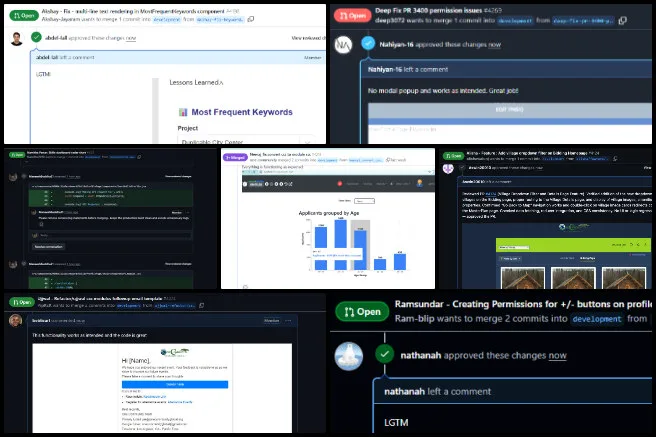
AND WE PRODUCED THIS WEEKLY UPDATES BLOG – CLICK HERE TO SUBSCRIBE
FOLLOW ONE COMMUNITY’S PROGRESS (click icons for our pages)










INVESTOR PAGES
OVERVIEW | LOCATION | FUNDING
GET INVOLVED
DONATE | WAYS ANYONE CAN HELP | MEMBERSHIP
CLICK HERE FOR ALL PAST UPDATES
Category: Basics of One Community, Community, One Community Tags: for the highest good of all, Conscientious Stewardship of Our Biosphere, transforming the global environment, solution based thinking, sustainable community building, Earthbag Village, Highest Good education, one community, Permaculture Communities, Highest Good housing, food forest, green living, resource based economy, Highest Good food, sustainable civilization building, permaculture, RBE, Highest Good society, creating global solutions, One Community Update, addressing climate change, Education for Life update, creating a new world paradigm, open source, grass roots sustainability, open source food, the betterment of society, non profit, self-sufficiency, ecological living, creating holistic transformational change, sustainable living, radical sustainability, solutions that create solutions, regenerative world building, open source sustainability, open source housing, One Community progress, Duplicable City Center Hub, global sustainability, open source design, Education For Life progress, better is possible
 One Community
One Community
























































